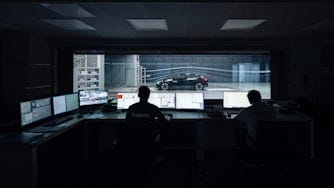Polestar Precept: From Concept to Car, Episode 2
Modern challenges sometimes have traditional solutions.

Take car design, for example. Digital renderings, photorealistic 3D models, and software such as Autodesk Alias and ICEM Surf are all highly advanced tools that automotive designers have at their disposal. Despite their complexity and modernity, however, they can’t account for everything. What’s needed, ironically enough, isn’t the latest software, but rather a material that’s been in use for almost 30,000 years.
Clay.
Scale models of cars, made from clay, allow a number of different possibilities. The clay’s pliable nature makes it easy to change, add, or take away. The models allow for much more hands-on brainstorming and collaboration, allowing multiple people to see the entire vehicle from various angles at the same time. It also forces designers to see the big picture; focusing too tightly on small details is a common issue when using digital methods.
Hear from the Precept’s clay modellers in episode two of “Polestar Precept: From Concept to Car”, fittingly titled “The clay model”, here.


